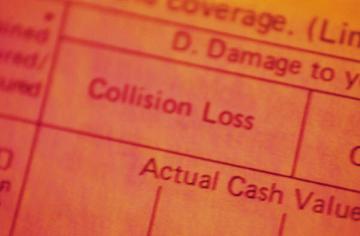 Many bikers do not understand their motorcycle insurance, and in case of accident, insurance companies take advantage of that lack of knowledge and do not pay victims what they are entitled to receive. Not understanding insurance also causes bikers to carry more or less insurance than they should. Before you drive your bike again, take a moment to review your motorcycle coverage.
Many bikers do not understand their motorcycle insurance, and in case of accident, insurance companies take advantage of that lack of knowledge and do not pay victims what they are entitled to receive. Not understanding insurance also causes bikers to carry more or less insurance than they should. Before you drive your bike again, take a moment to review your motorcycle coverage.
In South Carolina, all motorcyclists are required to carry liability insurance to cover bodily injury and property damage. The minimum amounts are $25,000 of bodily injury coverage per person, $50,000 of bodily injury coverage per accident, and $25,000 of property damage coverage per accident. This is referred to as 25/50/25. Remember, these are state-mandated minimums.
To determine whether 25/50/25 is sufficient coverage, think of how often and where you ride. Do you usually carry a passenger? Now think of a possible accident during a typical ride, and the bodily injury and property damage that could occur. Knowing that motorcycle riders are often hurt in accidents, do you think that coverage is adequate? Would the minimum property damage coverage replace your bike as well as repair a car you might hit?
Another option to pay for medical expenses is medical payments coverage. This pays for reasonable healthcare and funeral expenses for you and your family, even if you are at fault, for a period of one to three years.
Uninsured and underinsured motorist insurance ensures compensation for accidents where the at-fault driver is underinsured or uninsured, including hit-and-run accidents. In South Carolina, uninsured / underinsured coverage is portable, meaning it may apply to not only car accidents (whether you are the driver or passenger), but also motorcycle and pedestrian accidents. The law requires uninsured motorist coverage, while underinsured motorist coverage is optional.
In addition to liability insurance, you may wish to purchase collision and / or comprehensive insurance to cover damage to your bike. Collision coverage protects your bike in the event of a crash with an object or other vehicle, while comprehensive coverage covers damage caused by other mishaps such as flood and fire. In both cases, you have a deductible, which is the amount you pay before insurance kicks in. You choose the deductible, which affects the price of your policy. When you add both coverages to your policy, you are “fully insured.”
The first step to ensure you have the proper amount of motorcycle insurance is to look at your riding habits and determine how much will adequately protect you. In order to receive the compensation you and your family are entitled to, it’s important to know what your policy covers.
Was this post helpful? Share it with your friends on Facebook.

